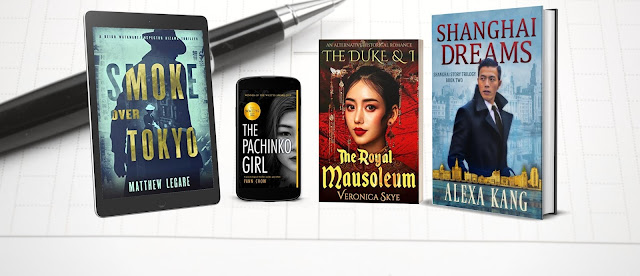If you have been following Asian Books Blog, you’ve probably come across the name Kristine Ohkubo. Kristine is a Los Angeles-based indie-author who uses her work to explore topics related to Japan and Japanese culture.
Beginning with a travel guide to Japan, Kristine has published seven books since 2016, with each work exploring either Japan, Japanese culture, or Japanese history.
Kristine has had a deep love and appreciation for Japan and Japanese culture since she was a teenager growing up in Chicago, Illinois. As an adult, her extensive travels in Japan have enabled her to gain insight into this fascinating country, which she shares with you through her writings.
In June 2021, Kristine released an English guide to the traditional Japanese art form known as rakugo. Rakugo storytelling is a unique performance that uses gestures and narration rather than costumes and props; it requires a high degree of skill to perform. A rakugo story is comprised of both narrative and dialog between multiple characters, all of which are conveyed by a single storyteller. The storyteller strives to express the personality of each character by differentiating their tone of voice, choice of words, manner of speaking, and other factors.
The book titled, Talking About Rakugo: The Japanese Art of Storytelling, was written in collaboration with Tokyo-based English rakugo storyteller, Kanariya Eiraku.
Eiraku participated in the Tatekawa-ryu rakugo school established by the legendary rakugo performer Tatekawa Danshi. After learning about the essence of rakugo from the rakugo master, he began offering Japanese rakugo classes in Tokyo in 1991. Sixteen years later, he established his English rakugo classes. This year will mark the 15th anniversary of the establishment of the Canary English Rakugo classes in Tokyo.
Since 2007, he has performed in front of enthusiastic audiences in Japan, the United States, the United Kingdom, Denmark, Australia, New Zealand, Georgia, Kazakhstan, and Laos. He has also translated over sixty classical and contemporary rakugo stories into English.
Eiraku is one of the founding members of the English Rakugo Association in Tokyo. The organization was established in 2020 with the mission to spread rakugo all over the world.
In 2022, Kristine and Eiraku collaborated once again to bring you the second book in the rakugo series, Talking About Rakugo 2: The Stories Behind the Storytellers. The book is officially scheduled to be released on February 7, 2022, which happens to be Eiraku’s birthday!













